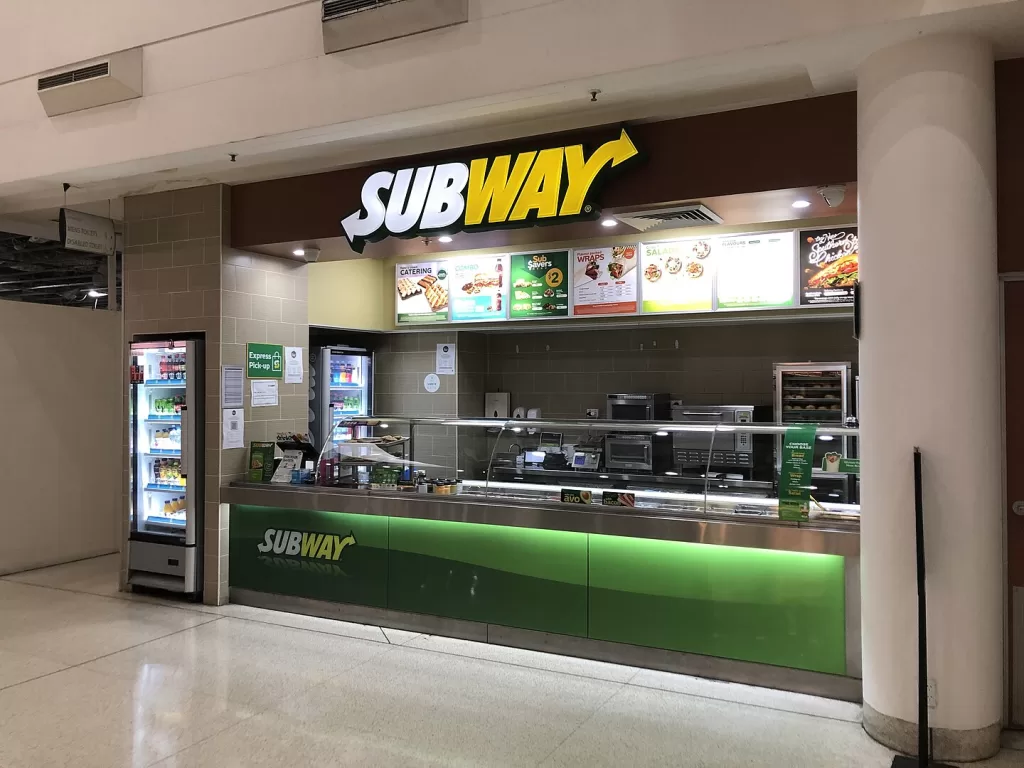
Why Subway closed over 600 U.S. outlets in 2024 — smart growth or struggle? In 2024, Subway—still the largest U.S. restaurant chain by unit count—shuttered 631 domestic locations, driving its U.S. total down to 19,502 for the first time since 2004. This marks the ninth straight year of net closures as the brand pursues a “Smart Growth” strategy, culls underperforming stores, and grapples with franchisee cost pressures, evolving consumer dining habits, and fierce fast-casual competition. Despite domestic contraction, Subway is investing in Fresh Forward 2.0 store redesigns, nontraditional venue expansions, and aggressive international growth to offset U.S. declines.

Executive Summary
Subway’s 2024 U.S. closures of 631 outlets mark its largest annual retrenchment in nearly a decade and cut its domestic network to 19,502 locations. The chain has lost roughly 7,600 U.S. units since its 2015 peak of approximately 27,000—evidence of both strategic pruning under its Smart Growth policy and persistent financial strain on franchise operators. As consumer appetites shift toward faster, healthier, and digitally integrated dining, Subway’s traditional model has faced headwinds, compounded by aggressive incursions from fast-casual brands and nontraditional foodservice channels. To rebound, the company is modernizing stores, expanding in airports, big-box retailers, and campuses, and doubling down on international markets, which is projected to add over 10,000 restaurants in the coming years.
Table of Contents
The Depth of the Decline
From Peak to Plateau
Subway’s domestic footprint swelled from a handful of Connecticut sandwich shops in the late 1960s to over 27,000 U.S. outlets by 2015. Since then, net closures have outpaced openings, eroding nearly 28% of its unit base through 2024.
2024’s Store Closure Numbers
In the calendar year 2024 alone, Subway shuttered 631 U.S. locations—a rate unmatched in eight years—that dropped its network beneath 20,000 stores for the first time since 2004. This ninth consecutive year of net decline underscores both strategic consolidation efforts and franchise-level economic distress.
Root Causes Behind the Store Shutterings
“Smart Growth” Footprint Optimization
Subway credits part of the closures to its deliberate Smart Growth policy, which leverages sales and demographic data to close underperforming units and focus capital on high-potential markets.
Franchisee Economics and Cost Pressures
Rising Rent, Wages & Utilities
Franchise operators have wrestled with ballooning rent obligations, higher minimum wages, and utility inflation—compressing profit margins and making marginal stores untenable.
Royalty Fees vs. Support
Many franchisees complain that the 8%–10% royalty fees and advertising contributions outpace the corporate support for remodeling, training, and marketing, fueling exits and non-renewals.
Changing Diners’ Preferences
Health, Speed & Customization
Today’s consumers gravitate toward plant-based, protein-forward, and grab-and-go options, forcing brands to innovate menus and service models. Subway’s incremental additions (e.g., Beyond Meat subs) lag behind fast-casual peers in speed and customization appeal.
Digital Ordering & Delivery
While third-party apps and in-house platforms have revolutionized off-premises dining, many legacy Subway units lack efficient kitchen layouts for delivery, putting franchisees at a disadvantage versus ghost-kitchen and cloud-kitchen operators.
Intensifying Competitive Landscape
Fast-Casual Disruptors
Chains like Jersey Mike’s, MOD Pizza, and Panera Bread have stolen market share by coupling streamlined menus with loyalty programs and aspirational branding—a contrast to Subway’s broad but aging footprint.
Nontraditional Rivals
McDonald’s, Starbucks, and convenience store chains leverage drive-thru formats and nontraditional partnerships (e.g., in big-box retailers and airports), encroaching on territories where Subway once dominated smaller strip-mall footprints.
Subway’s Strategic Counterpunch
Fresh Forward 2.0 Store Remodels
The Fresh Forward 2.0 concept revamps interiors with digital menu boards, open kitchens, self-order kiosks, and modern décor—designed to elevate guest experience and streamline operations.
Embracing Nontraditional Footprints
Partnerships with Walmart, universities, airports, and sports venues are rolling out Subway Express formats, tapping captive audiences and lower rental tiers, while reducing reliance on standalone roadside leases.
Bold International Expansion
Internationally, Subway’s footprint has climbed to nearly 37,000 units, positioning it third globally behind McDonald’s and Starbucks. Master franchise deals in Latin America, Asia, and emerging markets like Mongolia aim to add another 10,000 restaurants in the coming five years.
Stakeholder Implications
Franchisees & Workforce
Closures trigger job losses for hundreds of employees and financial write-offs for landlords and franchisees, straining local economies and eroding proprietor trust in corporate support channels.
Brand Equity & Investors
While Roark Capital’s 2024 acquisition of Subway for $9.6 billion infused fresh capital, investors remain cautious as shrinking U.S. units test brand momentum and raise questions about long-term profitability.
Community & Consumer Impact
In markets losing stores, consumers face reduced lunch options and neighborhood foot traffic drops. Conversely, markets with remodeled Fresh Forward 2.0 units often report spikes in customer satisfaction and incremental sales lifts.
Looking Ahead
Domestic Rebuilding Prospects
Subway’s U.S. rebound hinges on aggressive reinvestment in high-potential metros, menu innovation aligned with wellness trends, and enhanced digital capabilities to meet on-demand consumption patterns.
Global Growth Trajectory
Emerging markets—home to growing middle classes and under-penetrated quick-service segments—offer fertile ground for Subway’s low-cost franchise model, hedging against mature market saturation.
Potential Roadblocks
Economic slowdowns, supply-chain volatility, and intensifying fast-casual entrants remain risks. To mitigate, Subway must balance lean domestic operations with robust global diversification, continuous menu R&D, and franchisee support enhancements.
Conclusion
Subway’s closure of hundreds of U.S. stores in 2024 underscores a critical inflection point: one defined by deliberate footprint optimization and reactive measures to shifting consumer and franchisee dynamics. While domestic contraction poses immediate challenges, Subway’s Fresh Forward 2.0 remodels, nontraditional venue strategies, and ambitious international franchise pipeline illuminate a strategy geared for long-term resilience. The next few years will test whether this storied sandwich brand can reinvent its U.S. presence while capitalizing on global opportunities.
FAQs
1. Why did Subway close over 600 U.S. stores in 2024?
Subway’s closures stem from its Smart Growth policy to optimize underperforming locations, coupled with franchisee cost pressures and evolving consumer preferences favoring faster, healthier options Business Insider.
2. How many Subway outlets remain in the U.S. after 2024’s closures?
As of year-end 2024, Subway operated 19,502 U.S. locations—down from its 2015 peak of about 27,000 Business Insider.
3. What is the Fresh Forward 2.0 initiative?
Fresh Forward 2.0 is Subway’s store redesign program featuring digital kiosks, open kitchens, modern décor, and streamlined layouts to enhance guest experience and operational efficiency New York Post.
4. Is Subway still expanding internationally?
Yes—Subway’s global footprint has grown to nearly 37,000 units, with master franchise agreements targeting more than 10,000 new locations in emerging markets over the next several years The US Sun.
5. What challenges lie ahead for Subway in the U.S.?
Key challenges include stiff fast-casual competition, supply-chain headwinds, and the need for continuous menu innovation and enhanced digital ordering to meet modern consumer expectations The Times of India.
More Reads:
Jeffrey Epstein List: The Enigmatic Life and Scandalous Legacy of Jeffrey Epstein


